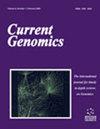Genes Selectively Expressed in Rat Organs
IF 1.4
4区 生物学
Q4 BIOCHEMISTRY & MOLECULAR BIOLOGY
引用次数: 0
Abstract
Background: Understanding organic functions at a molecular level is important for scientists to unveil the disease mechanism and to develop diagnostic or therapeutic methods. background: Understanding organic functions at a molecular level are important for scientists to unveil the mechanism of disease and to develop diagnostic or therapeutic methods. Aim: The present study tried to find genes selectively expressed in 11 rat organs, including the adrenal gland, brain, colon, duodenum, heart, ileum, kidney, liver, lung, spleen, and stomach. objective: Understanding organic functions at a molecular level are important for scientists to unveil the mechanism of disease and to develop diagnostic or therapeutic methods. The present study tried to find genes selectively expressed in 11 rat organs, including the adrenal gland, brain, colon, duodenum, heart, ileum, kidney, liver, lung, spleen, and stomach. Method: Three normal male Sprague-Dawley (SD) rats were anesthetized, their organs mentioned above were harvested, and RNA in the fresh organs was extracted. Purified RNA was reversely transcribed and sequenced using the Solexa high-throughput sequencing technique. The abundance of a gene was measured by the expected value of fragments per kilobase of transcript sequence per million base pairs sequenced (FPKM). Genes in organs with the highest expression level were sought out and compared with their median value in organs. If a gene in the highest expressed organ was significantly different (p < 0.05) from that in the medianly expressed organ, accompanied by q value < 0.05, and accounted for more than 70% of the total abundance, the gene was assumed as the selective gene in the organ. Results & Discussion: The Kyoto Encyclopedia of Genes and Genomes (KEGG), and Gene Ontology (GO) pathways were enriched by the highest expressed genes. Based on the criterion, 1,406 selective genes were screened out, 1,283 of which were described in the gene bank and 123 of which were waiting to be described. KEGG and GO pathways in the organs were partly confirmed by the known understandings and a good portion of the pathways needed further investigation. Conclusion: The novel selective genes and organic functional pathways are useful for scientists to unveil the mechanisms of the organs at the molecular level, and the selective genes’ products are candidate disease markers for organs.大鼠器官中选择性表达的基因
背景:了解分子水平的有机功能对于科学家揭示疾病机理和开发诊断或治疗方法非常重要:从分子水平了解机体功能对于科学家揭示疾病机理、开发诊断或治疗方法非常重要。目的:本研究试图发现大鼠肾上腺、脑、结肠、十二指肠、心脏、回肠、肾、肝、肺、脾和胃等 11 个器官中选择性表达的基因:从分子水平了解机体功能对科学家揭示疾病机理和开发诊断或治疗方法非常重要。本研究试图发现大鼠肾上腺、脑、结肠、十二指肠、心脏、回肠、肾、肝、肺、脾和胃等 11 个器官中选择性表达的基因。研究方法麻醉三只正常雄性 Sprague-Dawley(SD)大鼠,摘取其上述器官,提取新鲜器官中的 RNA。纯化的 RNA 经反向转录后使用 Solexa 高通量测序技术进行测序。基因的丰度以每百万碱基对测序的每千碱基转录本序列片段的预期值(FPKM)来衡量。寻找器官中表达水平最高的基因,并与其在器官中的中位值进行比较。如果表达量最高的器官中的基因与表达量中位数器官中的基因有显著差异(p < 0.05),同时 q 值 < 0.05,且占总丰度的 70% 以上,则假定该基因为该器官中的选择性基因。结果 & 讨论:高表达基因富集了京都基因组百科全书(KEGG)和基因本体(GO)通路。根据这一标准,筛选出 1 406 个选择性基因,其中 1 283 个已在基因库中描述,123 个等待描述。器官中的 KEGG 和 GO 通路部分得到了已知认识的证实,还有相当一部分通路需要进一步研究。结论新的选择性基因和有机功能通路有助于科学家从分子水平揭示器官的机制,而选择性基因的产物则是器官的候选疾病标志物。
本文章由计算机程序翻译,如有差异,请以英文原文为准。
求助全文
约1分钟内获得全文
求助全文
来源期刊

Current Genomics
生物-生化与分子生物学
CiteScore
5.20
自引率
0.00%
发文量
29
审稿时长
>0 weeks
期刊介绍:
Current Genomics is a peer-reviewed journal that provides essential reading about the latest and most important developments in genome science and related fields of research. Systems biology, systems modeling, machine learning, network inference, bioinformatics, computational biology, epigenetics, single cell genomics, extracellular vesicles, quantitative biology, and synthetic biology for the study of evolution, development, maintenance, aging and that of human health, human diseases, clinical genomics and precision medicine are topics of particular interest. The journal covers plant genomics. The journal will not consider articles dealing with breeding and livestock.
Current Genomics publishes three types of articles including:
i) Research papers from internationally-recognized experts reporting on new and original data generated at the genome scale level. Position papers dealing with new or challenging methodological approaches, whether experimental or mathematical, are greatly welcome in this section.
ii) Authoritative and comprehensive full-length or mini reviews from widely recognized experts, covering the latest developments in genome science and related fields of research such as systems biology, statistics and machine learning, quantitative biology, and precision medicine. Proposals for mini-hot topics (2-3 review papers) and full hot topics (6-8 review papers) guest edited by internationally-recognized experts are welcome in this section. Hot topic proposals should not contain original data and they should contain articles originating from at least 2 different countries.
iii) Opinion papers from internationally recognized experts addressing contemporary questions and issues in the field of genome science and systems biology and basic and clinical research practices.
 求助内容:
求助内容: 应助结果提醒方式:
应助结果提醒方式:


